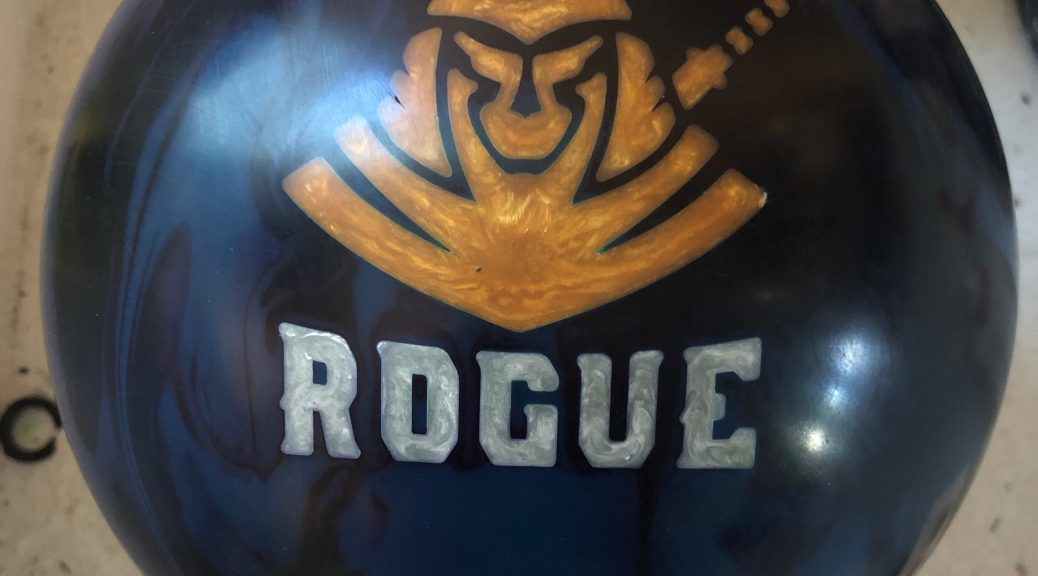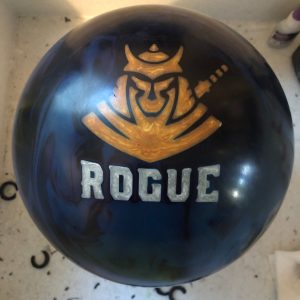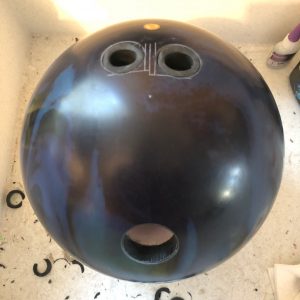The Assassin Goes For The Kill…
First Impressions
Great cover added to a great core. What can go wrong? Not much with the Rogue Assassin.
Our Testers:
Tamer Elbaga (Lefty)
Style: Tweener
RPM: 375 rpm
PAP: 5 & 3/8 up
Average Speed: 18.5 mph (at release)
Axis tilt: low
Axis rotation: medium/high
Test Equipment: 14 Pounds
Layout: 65 x 5 x 40
Intent: Medium/long roll with a medium transition at the breakpoint
Sean Jensen (Righty)
Style: Power player
RPM: 475 rpm
PAP: 5 1/2 & 1/4 up
Average Speed: 18.5 mph (at release)
Axis tilt: low
Axis rotation: medium
Test Equipment: 14 Pounds
Layout: 60 x 5 x 45
Intent: Medium/long roll with a medium transition at the breakpoint
Bryan Hoffman (Righty)
Style: Higher Tilt Stroker
RPM: 280 rpm
PAP: 4 1/4 & 1/8 down
Average Speed: 17.5 mph (at release)
Axis tilt: high
Axis rotation: medium
Test Equipment: 14 Pounds
Layout: 65 x 4.5 x 35
Intent: Medium roll with a slow transition at the breakpoint
Thanks to Jeff Smith and Pure It Bowling for drilling our equipment.
Buy the Motiv Rogue Assassin at PureItBowling.com.
Thanks to Limerick Bowl in Limerick, PA.
“Keep in mind that coverstock accounts for 70% of ball reaction, but the core creates the dynamic shape of the reaction. Your driller will alter the shape to suit your game.”
Test Pattern:
THS: 40ft, 23ml
Sport: Rt 66: 45ft, 23.3 ml, 3.67:1 ratio
Value
A
The first impression holds with this piece. I can easily see this being a benchmark ball in most bags and that bodes very well in terms of versatility.
Specs
The Rogue Assassin uses the Sigma (symmetric) core inside the Coercion™ HFS Reactive Solid coverstock.
15 pound = RG of 2.47, diff of .047
14 pound = RG of 2.50, diff of .044
Coverstock finish: 3000 LSS
Overall
THS: A
The Motiv Rogue Assassin combines essentially the quintessential benchmark core with the strong coverstock from the Jackal Ghost. For those that have watched my best of series, the Jackal Ghost was one of my favorite solid asyms of this and last season. You never know precisely what you will get when you combine two elements, but in this case it works very well. Bottom line is the Assassin has traction. The cover is strong with a gritty finish. Despite that, it never felt like it was laboring. It not only started up relatively early, it also had real giddyup downlane. I absolutely love low RG medium diff cores. I feel like those are benchmark specs commonly found on those type of cores that just work on everything. Well almost everything. It also feels like a symmetric Jackal Ghost. The roll characteristics are quite similar. The cover digs in and gets the ball going. The core has a smooth transition that nicely balances with the timing of the cover read of the midlane. All that allows for a really heavy roll through the pins. And don’t think for one second this ball can’t cover boards or labors. In fact the first ball I missed it 15 at the arrows out to 4. I turned around thinking absolutely zero chance. I had to watch it back on video that it struck. When I saw that on the first ball, I knew I was in for a treat. So it’s in the realm of say the Gamebreaker 2 benchmark world but it definitely starts up earlier. Missing in didn’t hold for me as the ball really does go. I got in to about 17 to 8 and it left me a ringer. I switched to the Rogue Blade back to 16 to 8 and it’s almost indistinguishable. However, when I moved to 17 to 8 hears where you saw that cleaner cover scoot through just crumbling the bucket whereas the Assassin made it back. Rogue is going to feel just a touch longer with about the same backend.
Sean is back as our high rev tester. For Sean the Rogue Assassin is pretty much a pocket magnet. He’s using less axis rotation than I so isn’t covering as many boards, even with a higher rev rate. But that also helps him control the pocket playing more direct without as aggressive reaction to friction. Still you can see that the Assassin does start up pretty early but not so early you feel it’s just going to stop. It does roll out a couple of times and that’s ultimately because this much surface for house shot is unnecessary for Sean. The rev rate and earlier roll does compound the issue. Nevertheless, it was quite a straightforward and a fairly easy ball to test. Sean used the Venom Shock quite effectively for a long time. This ball really fits perfectly between the Venom Shock and Jackal Ghost.
Bryan was up next and to prove the ball works for all testers, he proceeded to throw a bunch of strikes. Again really solid ball motion for Bryan. He stuffed the pocket on several shots. Occasionally the ball bailed as it rolled a bit early but maybe they weren’t great shots. However I want you to see everything so you get an idea of what the ball is about. He also tested the loop out to the friction and it came back and carried. Very versatile roll. Sometimes lots of surface with symmetrics don’t work out great for Bryan on house shots as they force him in but then the balls don’t have the oomph to go through the pins. He generally didn’t have that issue with the Rogue Assassin. However, he did feel there was a relatively clear limit on this walled up pattern.
Final Thoughts
The Motiv Rogue Assassin looks to be a great piece. I think it really does fit perfectly between the stronger more angular Jackal Ghost and the very smooth and early Venom Shock. I know in the Motiv ball guide, it wouldn’t be instinctual to pick that up the way the line up is drawn. However, as a practical bowling matter, that’s how I see them complimenting each other. Honestly it’s strong enough to make the Medium-Heavy lineup somewhat redundant in between. It’s not that the Villain and Forge aren’t good balls. It’s just a matter of simplicity in an arsenal. However you design your bag, I don’t say this much but this ball is a must for Motiv fans. Anyone considering jumping in to Motiv, this is easily the one I would recommend to try first.



